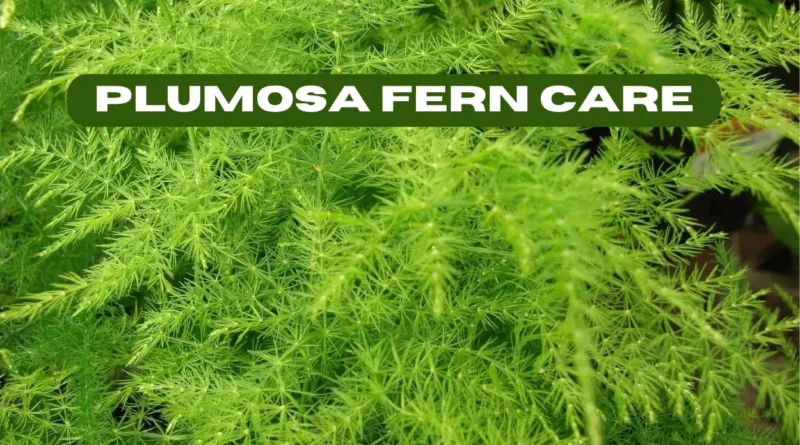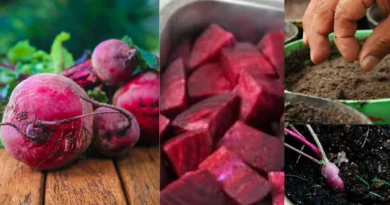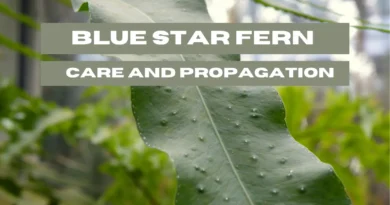Asparagus Fern Plumosa Care: All You Need to Know 2025
Asparagus Fern Plumosa Care: A Guide to Growing and Caring for this Delicate Beauty
Plumosa Fern is scientifically known as Asparagus setaceus and other common names are Plumosa Asparagus fern, common asparagus fern, and lace fern. This fern looks elegant if you use it as a hanging plant or as part of mixed plant arrangements.
This fern is easy to grow and care for. This beautiful fern is also used in floral arrangements because it has soft leaves. It can be used as a house plant and ornamental plant.
In this article, you will come to know all about asparagus fern plumosa care and how can make many plants from one.
Table of Contents
| Scientific Name | Asparagus setaceus |
| Common Names | Plumosa Fern, Asparagus Fern |
| Origin | Southern regions of Africa |
| Foliage | Feathery, emerald-green |
| Adaptability | Well-suited for indoor and outdoor gardens |
| Light Requirements | Bright, indirect light |
| Soil Type | Well-draining soil |
| Watering | Keep soil consistently moist |
| Humidity | Higher humidity levels |
| Care Difficulty | Easy |
| Air-Purifying | Yes |
Appearance
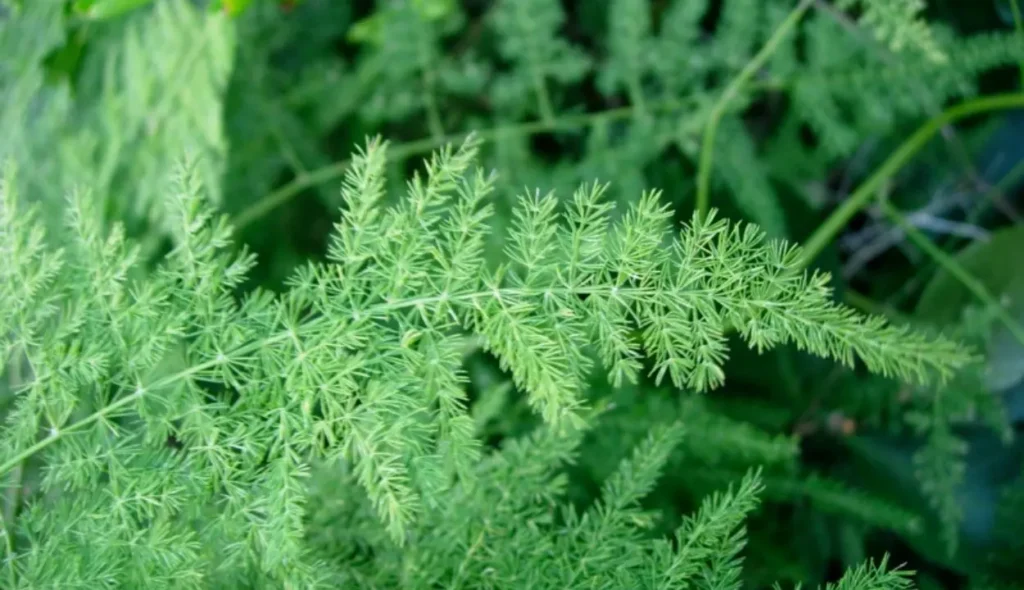
The plumosa fern has beautiful emerald green attractive foliage. The fern makes you happy upon looking because of the fresh and lively color. Each leaf’s shape is like a pine needle, giving it an elegant look.
They look like a dancing fountain or green curtain when waving in the breeze. These leaves feel incredibly soft and gentle to the touch, almost like green feathers.
Asparagus Fern Plumosa Care
Although this is a hardy plant and can survive in tough conditions but for good health and to maintain the foliage color there are some basic asparagus fern plumosa care:
Light Requirement:
This fern likes to grow in bright light locations and does not like direct light, especially in summer. The heat in sunlight in summer can damage their delicate leaves. Place the fern in a partial shade where it gets bright light. The plumosa fern light requirement is between 10,000 and 16000 lux.
In winter, direct sunlight will not damage the leaves of the fern. Take care that if the leaves start looking bit droopy then this is the symptom that the fern is getting insufficient light. This mostly happens in winter.
In indoor, place the fern near a window where it can catch filtered sunlight during the day. East or north-facing windows are often great choices as they provide indirect light. Plumosa Ferns are quite adaptive and can withstand lower light levels if you don’t have a location with adequate natural light. Just make sure they get some brightness to keep those lush, green fronds happy.
Soil Requirement:
Plumosa fern likes to grow in well-draining soil. For indoor growing use good quality soil which includes peat moss or you can add perlite to make the soil more well-draining. When growing outdoor you can use normal garden soil mix organic matter to make soil well-draining and increase strength. The pH of the soil is not important to this fern, they often like a slightly acidic to neutral range.
Water Requirement:
Plumosa fern likes to grow in consistent soil moisture. This fern does not like to be overwatered or waterlogged conditions. If the upper surface of the soil looks dry then water otherwise avoid watering. Make sure that the pots have drainage holes so that the excess water can drain otherwise wet soil will lead to root rot.
Temperature Requirement:
Plumosa Ferns grow in temperatures that most people consider to be pleasant (12°C-28°C). If you are growing Fern outside, ensure sure it is protected from strong winds and extreme temperatures. When you keep your Plumosa Fern indoors during the winter, keep it away from heaters or radiators. Leaves turning brown or dropping can be a sign that the temperature is low or high for plants.
Humidity Requirement:
The Plumosa Fern thrives in a high-humidity environment. Native to the damp, humid regions of South Africa, this plant prefers conditions that mimic its original habitat.
To maintain optimal humidity levels, regular misting is recommended. In arid regions or during colder months when indoor heating systems can dry out the air, a humidifier can be utilized for extra humidity and moisture levels.
Fertilizer Requirement:
Plumosa fern is hardy and does not have any fertilizer requirements. If you want to fertilize to give a little boost in growth and promote overall health you can use a balanced water-soluble fertilizer (20-20-20) liquid fertilizer or granular.
Fertilize in the growing season and read the instructions on the fertilizer pack before using. Fertilize after every 6 weeks and in winter when growth naturally slows down, you can cut back or skip fertilizing altogether.
If you want to use organic fertilizer we recommend adding decomposed manure it is the best alternative. Avoid using fresh manure because it can damage the roots of plants.
Pest and Diseases
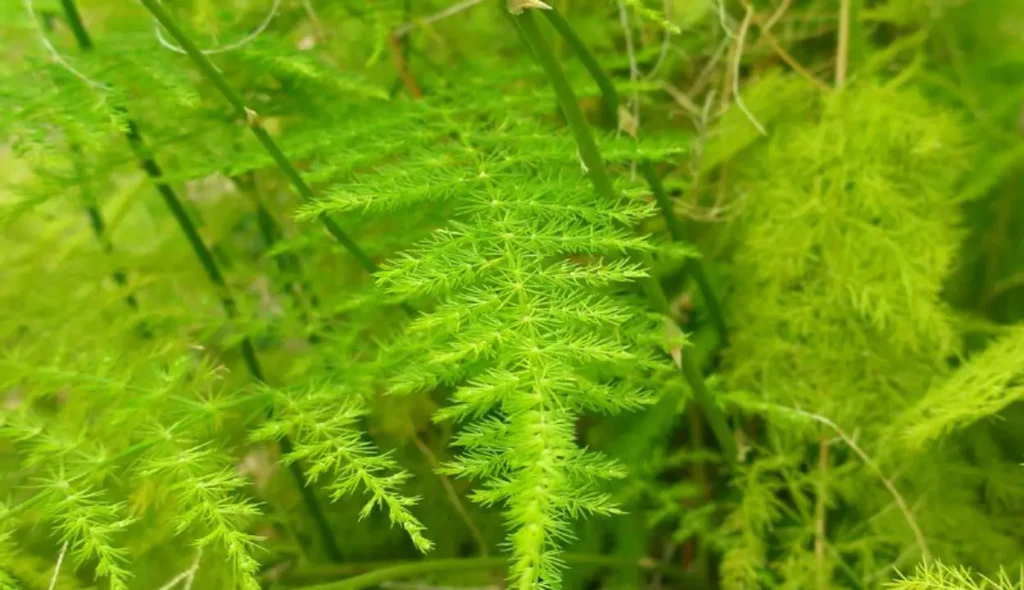
Pest and diseases do not really attack on this fern but if you see an attack on plant then take the necessary steps. You can use neem oil and insecticidal soap to eliminate pests and disease attack. Mealybugs, scale insects, spider mites, root rot, and leaf spot are the most common pests and diseases.
Pruning
Pruning plays an important role in promoting the health of plants. The ideal time to prune plumosa fern is before the start of new growth. Pruning will promote dense foliage growth. First, remove dead and yellow leaves. Removing yellow leaves will improve the plant’s appearance. Trim leggy or overgrown stems to encourage new growth. Denser growth and branching can be encouraged by pinching the tips of the stems.
Propagation
Plumosa asparagus fern propagation can be done by two methods:
Propagating from Offsets:
Plumosa asparagus Ferns frequently generate offsets, which are little side branches that sprout from the main plant.
- Identify healthy offset with its own roots.
- Gently separate it from the main plant using scissors or pruning shears.
- In a fresh pot, plant the offset.
Division:
A mature Plumosa Fern can be divided to produce new plants.
- Take the fern out of the garden bed or pot.
- Remove any excess soil to reveal the root system.
- Divide the plant into sections with the help of a sharp knife. Each section should have roots and some leaves.
- Plant each divided section in the pot or designated area in fresh soil.
Toxicity
The Plumosa Fern possesses a mild level of toxicity, particularly concerning pets, such as cats and dogs. The consumption of the leaves by pets can cause gastrointestinal discomfort. It is best to keep the Plumosa Fern out of reach of pets.
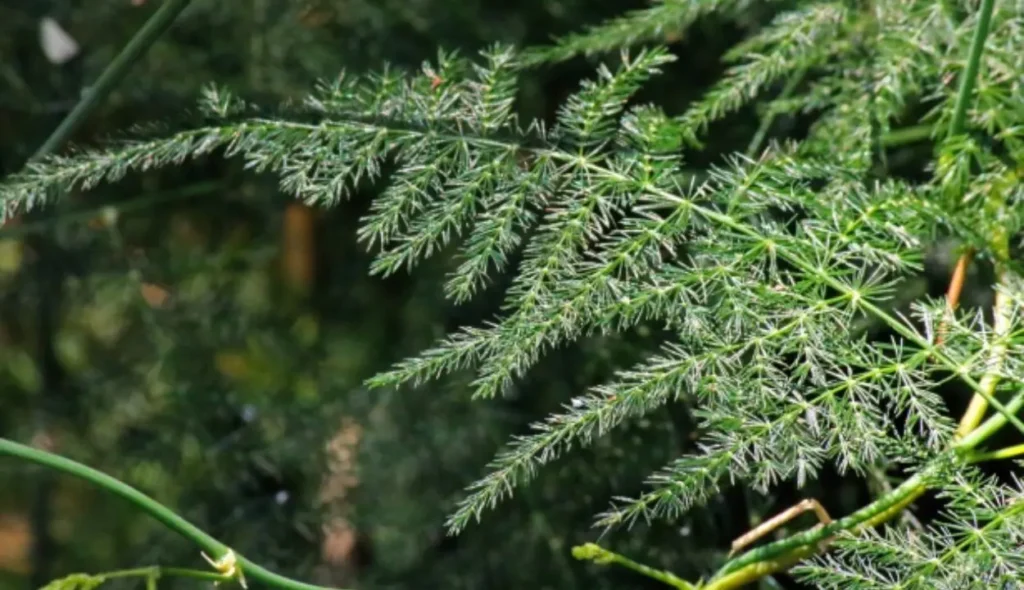
Conclusion
Plumosa asparagus fern adds a touch of elegance to the house as well as in outdoor spaces with its beautiful color and appearance. In this article, asparagus fern plumosa care is explained to promote health and color. Someone with limited gardening experience can grow this fern successfully.
FAQs
How can I propagate Plumosa Fern?
Plumosa asparagus Fern can be propagated by offsets or division. For offsets, identify a healthy side branch, separate, and plant it. For division, divide a mature plant into sections with roots and leaves, then plant each section.
How do I address pests and diseases affecting Plumosa Fern?
If you see pests or diseases use neem oil or insecticidal soap to eliminate them. Common issues include mealybugs, scale insects, spider mites, root rot, and leaf spot.
When is the ideal time for pruning Plumosa Fern?
Prune Plumosa Fern before the start of new growth for optimal results. Remove dead or yellow leaves, trim leggy stems, and pinch tips to encourage bushy growth.
Can Plumosa Fern tolerate direct sunlight?
Plumosa asparagus fern like to grow in bright light and do not like direct sunlight. The heat in sunlight in summer can damage the fern. Place the fern in a shady area where it gets bright light.
Is Plumosa Fern toxic to pets?
Yes, Plumosa Fern has mild toxicity, especially for pets like cats and dogs. Keep it out of reach to prevent gastrointestinal discomfort caused by leaf consumption.

